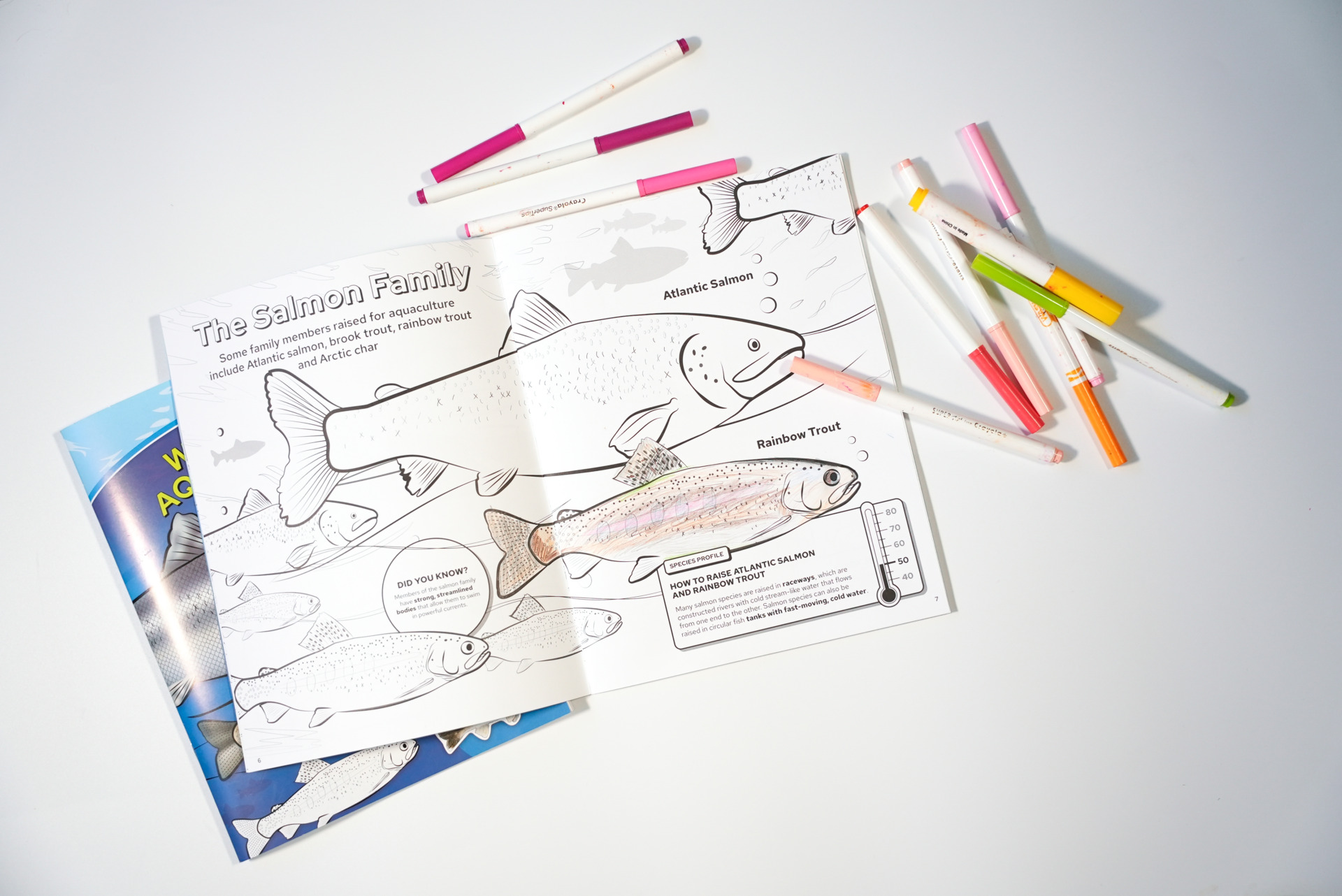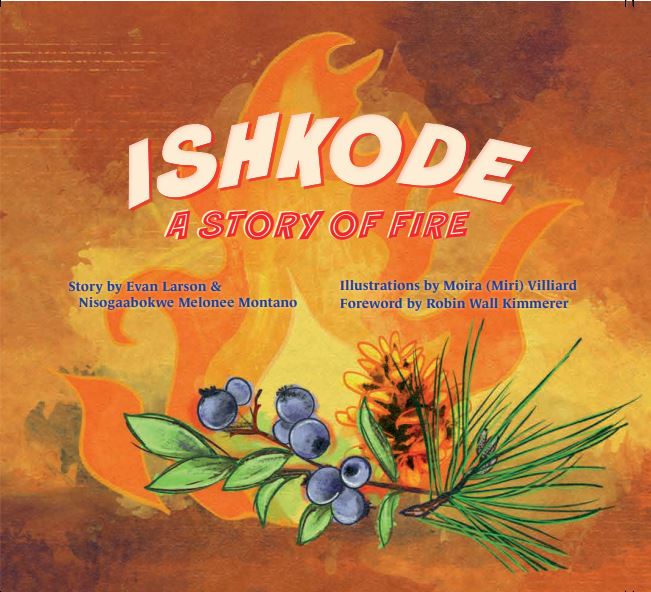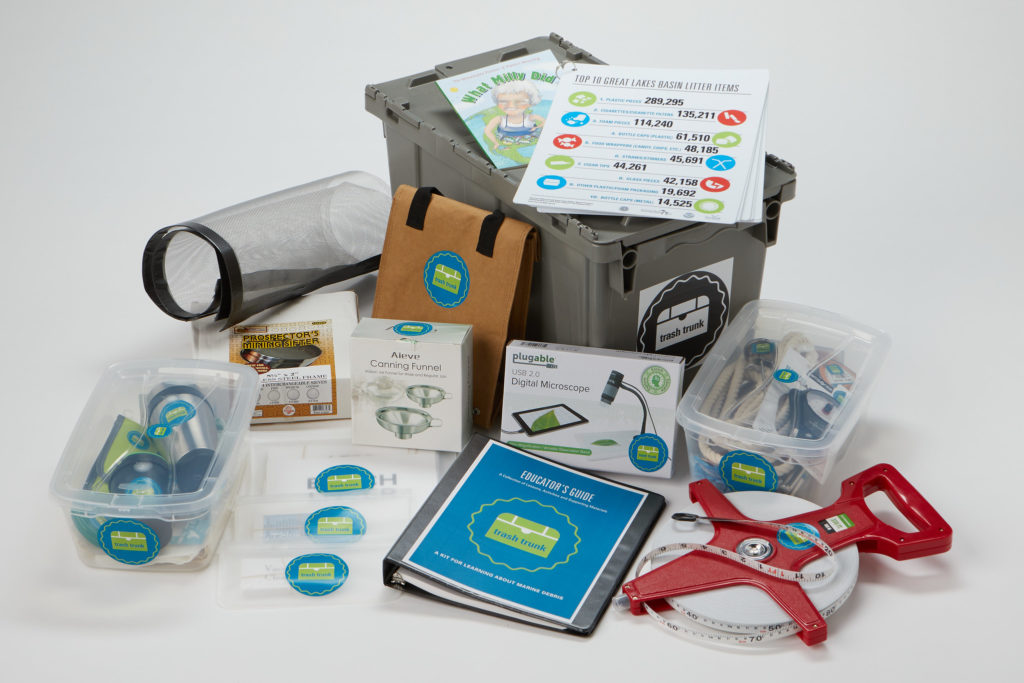
If you’re among the many who are looking for online learning materials for use at home, you might want to check out the Trash Trunk. This new learning kit focuses on trash found in our waterways, otherwise known as marine debris. Its free lessons are applicable for learners at levels kindergarten through adult in both formal and informal educational settings.
Wisconsin Sea Grant Education Outreach Specialist Ginny Carlton explained how the idea originated. “The topic for the trash trunks came from things we were seeing happening across the Great Lakes Basin. Marine debris is an emerging issue. There was consensus among the partners that this would be a worthwhile topic.”
Sea Grant programs in Ohio and Michigan, and the National Oceanic and Atmospheric (NOAA) Marine Debris Program joined Wisconsin Sea Grant staff in creating the trunks as part of their work for the Center for Great Lakes Literacy.
True to form, the team recycled lessons previously created by other educators, picking the best of the best materials about the impact of trash in both fresh and salt waters. “We used materials from groups like NOAA, the Ocean Conservancy, the Alliance for the Great Lakes and other institutions,” Carlton said.
The kit contains an educator’s guide with 14 lessons, sturdy informational display cards and supporting materials needed to perform the activities. Those activities are organized into three sections, which address the origins of marine debris, its impacts and what can be done. Educators can select a single lesson or develop a unit using Trash Trunk content, supplemental materials and common classroom supplies.
Wisconsin Sea Grant’s Senior Special Librarian and Education Coordinator Anne Moser has been doing marine debris activities with children for a while now. “They absolutely LOVE this topic!” she said. “It’s very action-oriented. They can embrace the topic and make changes, especially with their waste and plastic consumption at home, which I think kids find inspiring.”
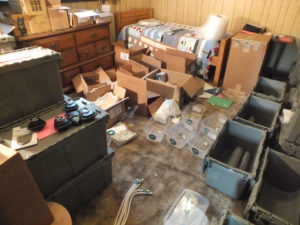
Trash trunk assembly in process in Carlton’s home. Image credit: Ginny Carlton, Wisconsin Sea Grant.
Carlton organized materials for the 35 trunks at home in her living room, since she is working from home due to COVID-19. “They did take up a little bit of space for a while. It was worth it. I think these resources will be well-used by the teachers and students across the Great Lakes Basin,” she said.
Besides finding space to assemble the trunks, figuring out what would fit inside the trunks was another challenge. “There’s a limit as to what you can fit in the tote box,” Carlton said. “I ordered supplies in waves just to make sure that what we wanted to include would actually fit.” These include tools that teachers might have difficulty in obtaining, such as a digital microscope, thermometers, a 100-foot measuring tape, and a manual luggage scale to weigh collected marine debris. Examples of reusable items are also included, like a mug, lunch totes and beeswax wrap, which is a substitute for plastic wrap.
Much to the UPS driver’s dismay, Carlton distributed all the trunks at the same time from her home to Sea Grant programs in the other states that border the Great Lakes: Minnesota, Illinois-Indiana, Ohio, Pennsylvania, New York and Michigan. (Five trunks will be available in Wisconsin through the interlibrary loan system.) After some masterful rearranging, the driver was able to fit the trunks into his truck.
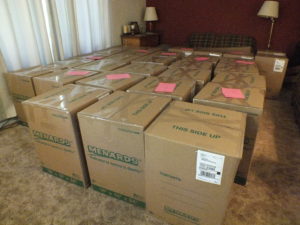
The trash trunks ready for shipping throughout the Great Lakes states. Image credit: Ginny Carlton, Wisconsin Sea Grant
Moser explained that due to COVID-19 quarantining requirements, the trunks are not available in Wisconsin right now but that the curriculum is available online. “If you have a student working at home, there are lessons they can use,” Moser said.
For more information about the Trash Trunk and other educational materials, please visit this resources page.
Funding for the trunks came from the Great Lakes Restoration Initiative through the Center for Great Lakes Literacy.




